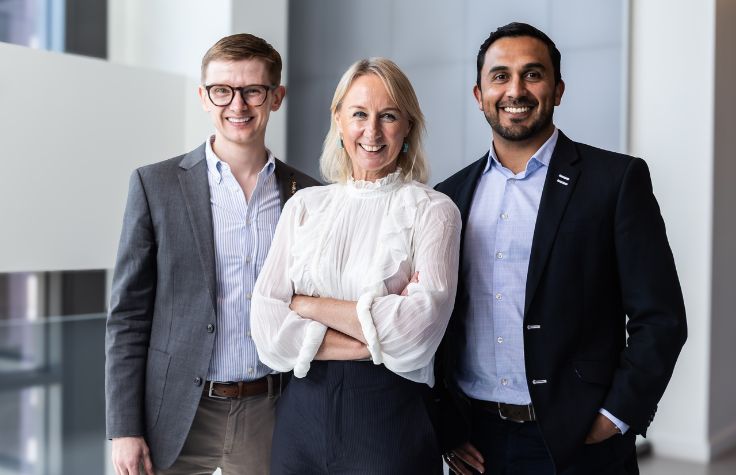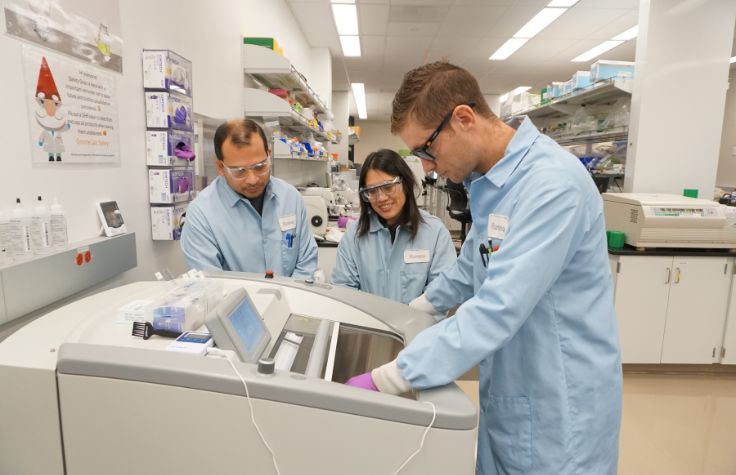
13 August 2025
When next-generation sequencing (NGS) first emerged in 2005, it was a genuine revolution. Scientists who had written their whole doctoral dissertation on a single gene were amazed to discover they could sequence an entire human genome in just days. A new industry was born.
The promise was palpable but, unfortunately, so were the barriers. It cost around $1 million to sequence a genome on a Solexa instrument, the great-grandparent of today’s NovaSeq X System. Sample prep was time-consuming and arduous, and labs needed their own bioinformaticians to analyze these new troves of data.
Illumina has spent the past two decades breaking down these barriers. By 2010, the cost of whole-genome sequencing had fallen to around $20,000. In 2015, it was $1000. Now, the price is around $200.
Shifting from a cost-per-gigabase model, the strategy we introduced last summer now focuses on delivering high-quality biological insights at the lowest end-to-end cost. To accomplish this, we are expanding our services, data, and software offerings to provide more integrated solutions.
The reasoning behind these refinements is simple. Customers often tell us that cost is only part of the equation. For example, we hear that sequencing workflows—from sample prep to data analysis—are complicated and take too long. That has inspired us to do what we do best: innovate. We’ve completely reworked our sequencing protocols, making simplicity, speed, and enhanced discovery the highest priorities.
Much is at stake: the next cancer breakthrough, rare disease diagnostics, pandemic mitigation, and so much more. Our mission is to improve human health, and that’s what fuels us.
Simplifying sample prep
Rigorous library preparation has been essential for NGS, but it slows the work. This multistep process takes hours to complete and can sometimes introduce errors into the data. First, researchers must fragment DNA or RNA samples into smaller pieces. From there, each fragment end must be repaired to facilitate the next step, which attaches DNA sequences called adapters to the fragments. This allows the fragments to be amplified. Then, researchers must perform library quantification and quality control. After sequencing, the subsequent data analysis presents its own challenges.
I list these steps to illustrate how cumbersome the process can be, and how Illumina technologies can simplify it. The MiSeq i100 Series uses room-temperature consumables to make sample prep more user-friendly—no more waiting for reagents to thaw. Also, the integrated cartridges no longer need washing between runs, which saves even more time. On the back end, DRAGEN secondary analysis is automated and only takes around two hours.
To simplify even further, Illumina has developed constellation, a mapped read technology that basically eliminates sample prep. Rather than following the painstaking processes described above, users can simply extract their DNA sample, load it onto a cartridge, and add the reagents. A workflow that used to take most of the day will soon be accomplished in about 15 minutes.
Stephen Kingsmore, MD, president and CEO of Rady Children’s Institute for Genomic Medicine, recently praised the constellation technology for its simplicity and ability to detect structural variations, which have historically made it challenging to identify rare disorders. Constellation gives researchers a powerful tool to quickly find these variations and understand how they drive disease.
Unlocking deeper analysis through software and AI
NGS and other omic technologies produce massive datasets, and finding actionable information in them can be challenging. Illumina recently released a new version of our DRAGEN software, 4.4, to make analysis even easier, particularly in oncology and multiomics. DRAGEN v4.4 also improves structural variant detection by 30%.
DRAGEN gives labs the ability to find valuable genomic markers without building a full-fledged bioinformatics infrastructure. This is incredibly valuable in oncology, streamlining efforts to identify new biomarkers that can improve early detection and the understanding of a treatment’s impact. The UK Biobank recently chose DRAGEN to analyze 500,000 whole genomes, and according to the subsequent study in Nature, its researchers identified 1.5 billion variants—data that is now available to pharma partners and researchers worldwide to accelerate drug discovery and advance precision medicine.
DRAGEN is just one component in a suite of computational tools. Our latest deep-learning algorithm, PromoterAI, identifies disease-causing variations in noncoding DNA.
A recent paper in the journal Science showed that PromoterAI effectively identifies variants in promoters, DNA sequences that initiate gene transcription, which can be difficult to detect. This technology improves diagnostic yield by as much as 6%, and will be particularly important for rare genetic disease research.
Developing a new standard for precision oncology
For decades, early cancer detection has been the gold standard—younger tumors are generally more treatable. But detection is not enough; clinicians must also identify the mutations that drive those tumors.
Again, speed is essential. The sooner oncologists understand the variations in a patient’s unique cancer, the faster they can apply precise treatments. That recognition led to TruSight Oncology Comprehensive (TSO Comp), a pan-cancer diagnostic that can identify hundreds of tumor biomarkers in a single test. This is particularly important in clinical settings, where tumor samples are often scarce.
This simplicity also supports in-house NGS. Many hospitals send their tumor samples to outside labs, but that takes time and samples can be lost. In-house sequencing means faster results for patients and complete control over the chain of custody.
Perhaps most importantly, the test rapidly delivers actionable reports. We can’t expect every oncologist to also be a genomic expert or bioinformatician. Clinical reports link sequencing results with clinical guidelines and approved therapies so they can deliver truly personalized oncology.
TSO Comp is already making an impact around the world. For example, clinicians at the University of Louisville Health recently introduced the test to their patients, and in the EU it is contributing to clinical trials, population genomics, and clinical care. It’s a critical next step toward a new standard of care that includes comprehensive genomic profiling.
These and other new technologies are part of our overall strategy to make NGS easier. Just as reducing the cost of sequencing opened up NGS for thousands of labs, simplifying the workflow will grow that footprint even more. Ultimately, these approaches will help accelerate research in oncology, rare diseases, population genomics, multiomics, and many other areas. Genomic discovery is essential to improving human health, and we are committed to taking it everywhere.


